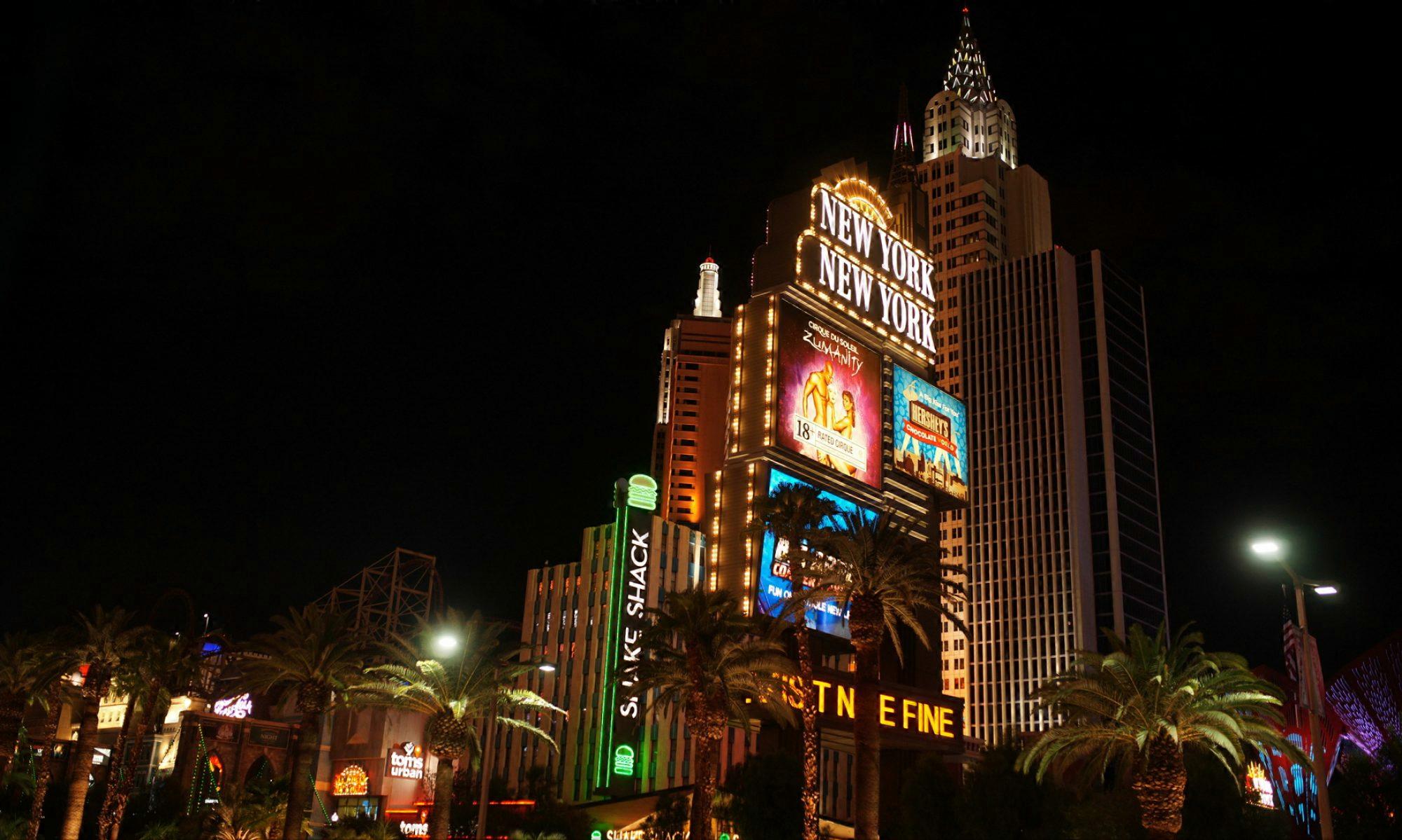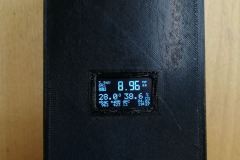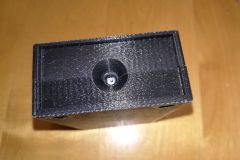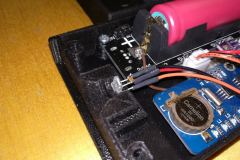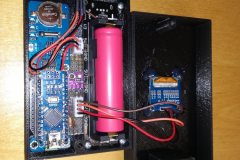A few weeks back I had the DIY Sky Quality Meter demo setup working (see here). My primary target in building a Sky Quality Meter was to have a complete all-in-one ambient conditions logging device. So to finalize this project, I added a micro SD-Card reader, real-time clock, barometric pressure sensor and a rechargeable battery. I could manage to squeeze all the code into an Arduino nano :-). With the small footprint of the Arduino nano, I could build a case box (3D-printed) with only 123x68x34mm external dimensions.
One essential part of the case is a chamber for the TAOS TSL237S sensor. The status LEDs of the Arduino did alter darkness readings severely. So any light apart from the night sky has to be shielded from the sensor!
Furthermore, the sensor requires a IR-block and color correction filter, to work comparable to the Unihedron Sky Quality Meter. As described here, Unihedron uses a HOYA CM-500 filter. I could find an almost identical filter, which is now included in the case as front cover of the sensor chamber.
My Arduino code may lack some fine tuning (forgive me, but I will not publish my source code. It would not be fair to Unihedron, who had all the development to build the original SQM device!). But the sensor readings are comparable to the second fraction digit in most cases to the SQM unit I could use for testing. This is sufficiently precise to me. I do refresh all the values (darkness, sensor frequency reading, temperature, humidity, pressure, dew point, calculated altitude, battery voltage, presence of SD card as well as time and date) every 5 seconds. This is someway insane, as a refresh rate of 30 to 60 seconds would still be very high 😉
With a freshly charged 18650 battery, my device may record for more than 50 hours. So even a weekend trip would be no issue.
For all curious folks out there, this is the parts list:
– Arduino nano v3
– DS1307 RTC module
– BME280 – temperature, humidity and pressure module
– Micro-SD Card interface
– 1.3″ OLED Display (128×64 Pixel)
– 18650 Lithium battery carrier with charger and 5V output
– TAOS TSL237S sensor
– 8mm UV-IR Cut filter
– 3D printed case
And this is the device:
